Madagascar is the perfect destination for the adventurous traveler and those who want to get away from mass tourism – but traveling around the 4th biggest island in the world will require a lot of time, and will push your patience to breaking point.
That being said, this Madagascar travel guide will make the journey a whole lot easier.
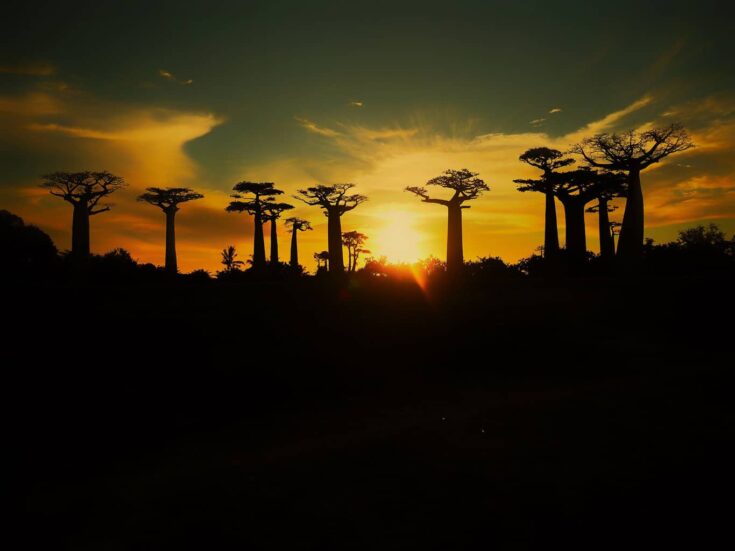
But if you’ve got time and patience, you will be rewarded with one of the most biodiverse destinations in the world.
Madagascar is home to thousands of species of flora and fauna of which almost 90% cannot be found anywhere else in the world, including the famous lemurs which are only found in Madagascar.
That’s actually a lie; there is only one species of wild lemurs on Comoros.
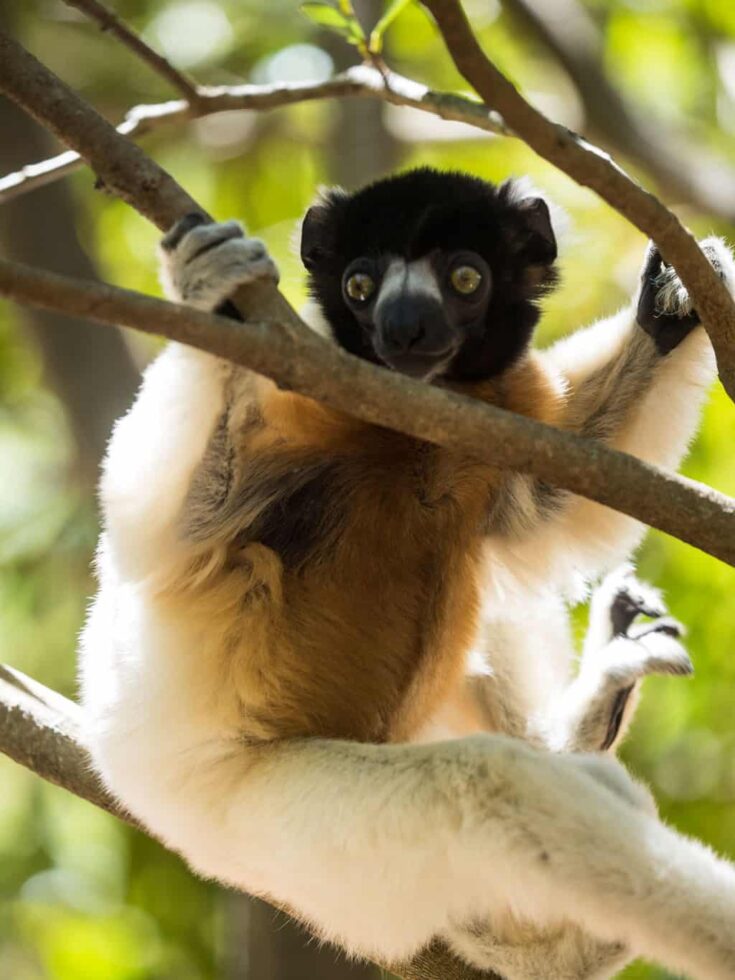
Madagascar is also home to some of the best and most underrated beaches in the world together with some breathtaking nature and scenery, making it a perfect travel destination.
But if you’re still on the fence, here are ten bullet-proof reasons you should visit Madagascar.
Need to know how to travel to Madagascar? It can be tricky going it alone if you’ve never ventured onto a remote island before. Keep reading to find out exactly how to travel to Madagascar.
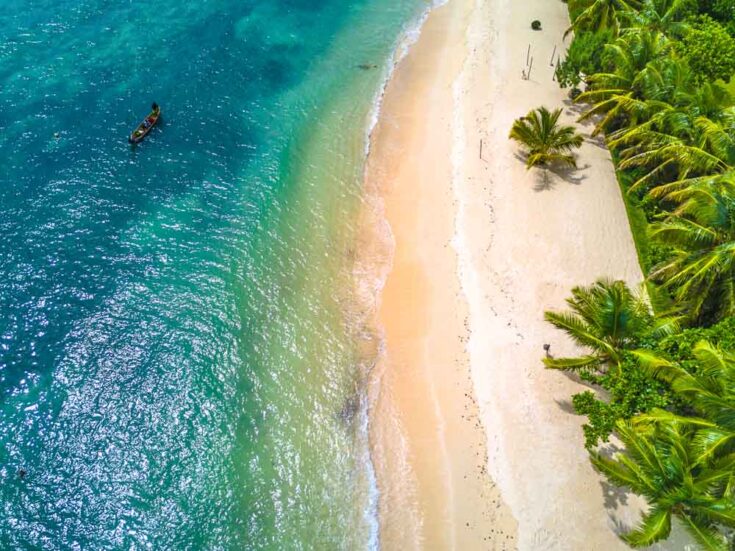
Madagascar Tourism | What You Need to Know
All the information provided here is from my experience traveling around Madagascar in April 2017, but has been updated to reflect the latest pricing and information.
Visa For Visiting Madagascar
Visas are required for everyone visiting Madagascar.
You can obtain a 30 days or 60 days visa at all international airports. Despite what the guidebooks say, the 30-day visa is NOT FREE.
A 90-day visa is no longer available!
30 days 35 Euro / 37 USD
60 days 40 Euro / 45 USD
Or you can apply in advance for an Evisa to Madagascar, this will save you a lot of time when arriving at the airport.
There are no ATMs or money exchanges before immigration and customs, so be sure to bring cash with you to pay your visa fee.
No passport photos are required, but a Yellow Fever vaccination certificate is (depending on your travel history and the countries you’ve visited).
The visa sticker takes one full page of your passport.
Arriving At Ivato International Airport (TNR) When You Travel to Madagascar
The main airport in Madagascar is located 20 km northwest of Antananarivo, the capital of Madagascar.
BNI Madagascar and Bank of Africa are both located after immigration and customs, and they both offer currency exchanges and ATMs.
Unlike lots of airports, the exchange rate at Ivato is pretty good, so it’s fine to change up money here.
There are also three small mobile-phone shops selling local sim cards for the three main providers in the country, Orange, Telma, and Airtel.
The shuttle bus between the airport and the capital is NOT running anymore, so the only way to get to town is by taking a taxi or arranging an airport pickup via your hotel.
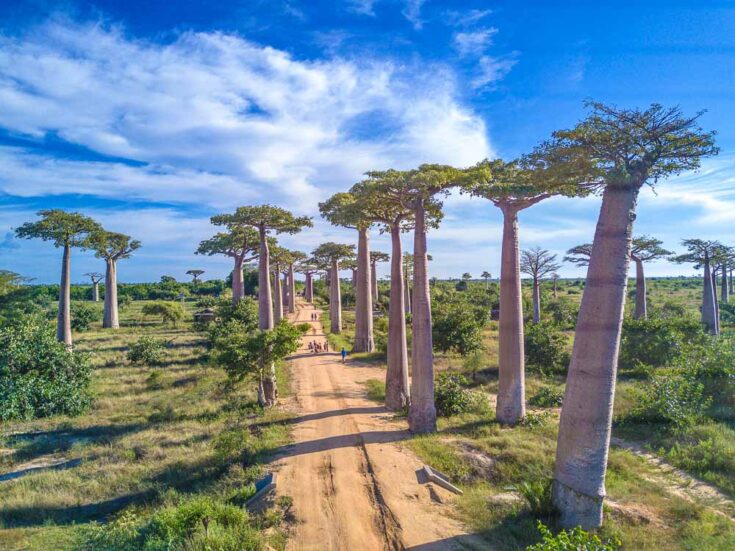
Because of traffic, the drive from the center could take anywhere from 40 minutes to almost 2 hours if you get stuck in evening or morning traffic.
The price to the center of Antananarivo is circa 40 000 Malagasy Ariary in the day, but remember to bargain. And at night it will set you back 50 000 Ariary.
NB. The local currency is NOT accepted after immigration on departure. Only USD/Euro are.
So be sure to get rid of your local Ariary before you go through immigration on departure. If not, you will be stuck with your Ariary like me.
Money in Madagascar.
The local currency of Madagascar is called Malagasy Ariary (MGA), just called Ariary.
1 USD: 3788 Ariary
1 Euro: 4523 Ariary.
British sterling didn’t seem to be a popular currency to exchange.
Every city and decent-sized town has numerous ATMs these days, and the two main banks are BNI Madagascar and Bank Of Africa. Both accept Visa, Visa Electron, and MasterCard.
None of the banks charged me bank fees when withdrawing money.
The maximum withdrawal at once is 400 000 Ariary (117 Euro / 125 USD)
Every bank seems to be able to exchange USD and Euro, but you will need your passport. But what you really want to know is, is Madagascar expensive? The answer is no.
Although the flights can be pricey, that’s usually the most expensive part of the trip. The rest of your Madagascar trip should be relatively cheap.
Internet in Madagascar
Wifi is available in most mid-range hotels and guesthouses around the country, but the speed is slow outside the big cities.
4G mobile connection is available in Antananarivo and Tamatave. In smaller cities a 3G/2G connection is available.
There is rarely an internet connection in smaller towns and on the road between most places.
Orange, Telma, and Airtel all sell sim cards for 40 USD with a 3GB data package on arrival at the airport.
How To Travel Around Madagascar
Traveling around Madagascar takes time and is very slow even by African standards.
Of the now 101 countries I have been to, I will go so far as to say that Madagascar is one of the slowest and most uncomfortable countries to travel around in the entire world.
The only other country I have visited that can be compared to Madagascar is Mongolia.
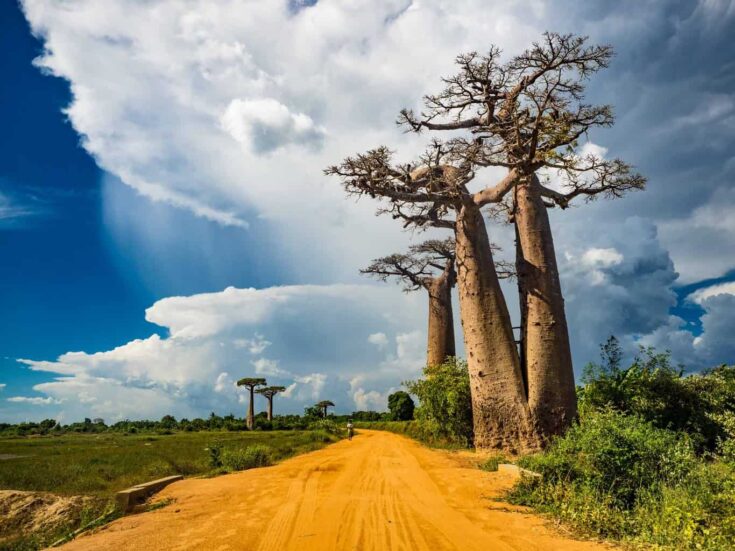
Update: Good News, While flying domestic inside Madagascar used to be ridiculously expensive, there is now a new local budget airline in Madagascar.
Air Madagascar has created a subsidiary just for a domestic flight, and it’s called Tsaradia ( Air Madagascar + Air Austral + Ewa Air). Domestic flight now costs 100 to 115 EUR one way to 400 EUR before.
So if you find traveling around South East Asia, India, or mainland Africa uncomfortable, Madagascar is definitely not for you. But if you like a bit of adventure and have plenty of time, Madagascar is definitely the place to go.

I stayed 16 days in Madagascar and traveling around the island took A LOT more time than I was expecting, so I wasn’t able to visit even half the places I wanted to before I left home.
Even the famous Avenue of Baobabs is a national road in the country.
Don’t expect to be able to visit big parts of the country if you only have two weeks and are taking local transport.
If you want to cover big parts of the country in a small amount of time, the only way is to rent a 4WD car with a driver for 65 USD + fuel a day.
The usual way to get around Madagascar is by taxi-brousse, which are usually old Mercedes minibusses that can never be too crowded, stop every time someone wants to get on or off, and only depart when full.
So there are no scheduled departures and arrival times can vary by up to 12 hours depending on when it left.
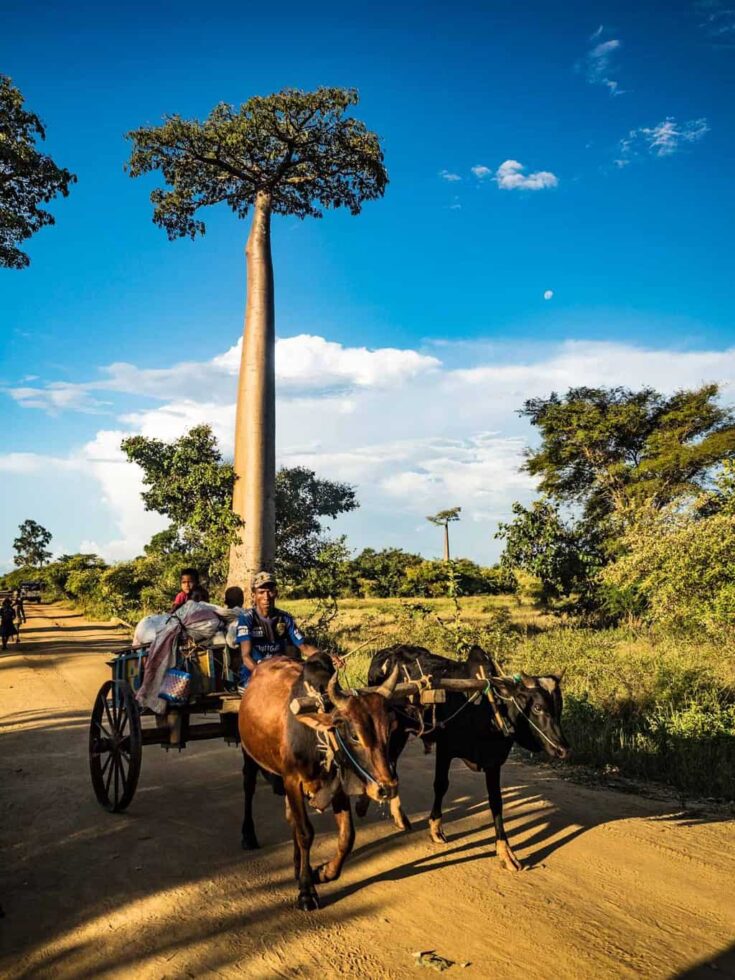
On a taxi-brousse, you’ll get chickens, ducks, and local people falling asleep on your shoulder.
Taxi-brousses are OK for shorter distances, but when you’re 180 cm+ tall like me, your knees and back will be done after hitting the seats in front of you for hours.
But things are improving with Cotisse Transport. This is a new local transport company that leaves on time, so if you’re 5 minutes late, they will have left already.
They even offer wifi on board and only one person to each seat instead of 3 as on a normal taxi-brousse.
Cotisse Transport doesn’t offer online booking, but you can book your ticket in advance by going to their office.
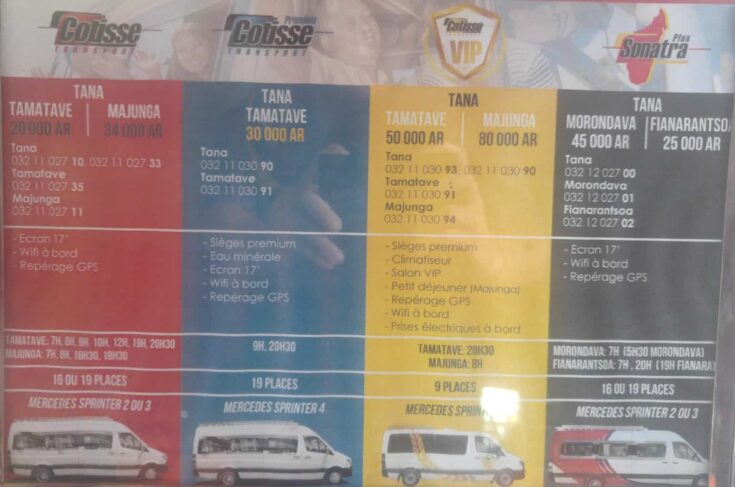
It’s also important to show up a MINIMUM of 30 minutes before departure to register that you are using your ticket and going on your trip and to load your luggage if you have it.
When traveling around Madagascar, you’ll have to pass through and most likely spend the night in Antananarivo each time you want to head to a different part of the country.
During my trip here, I transited the capital three times, and each time I had to spend the night there.
Madagascar, the perfect destination in Africa for the adventures traveler and travellers that want to get away from mass tourism and want to see wildlife and nature, here´s a complete guide to everything you need to know
Is Madagascar safe?
I personally didn’t have any problems in Madagascar, but a lot of travelers I met had been pickpocketed or had stuff stolen from their luggage when taking a taxi-brousse.
There are A LOT of beggars in Madagascan cities, and most of them are young children. Most of them will respect your “no,” but you do come across a few young “pricks” who go straight for your pockets.
You are required by law in Madagascar to carry your passport with you all the time.
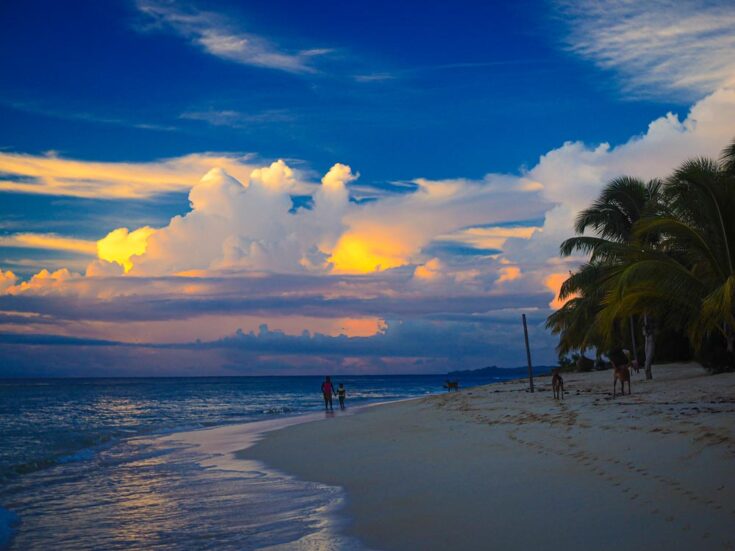
If you don’t have it on you and get stopped by the police/military, you are required to pay an unofficial “safety fine” of around 10 000. If walking around after dark, there is a higher chance of getting stopped.
This is especially true in Antananarivo and around Place de l’Indépendance, where I was stopped four times during my visit. As a single white male walking around, you do get some hassle from local women, especially if you’re going out drinking.
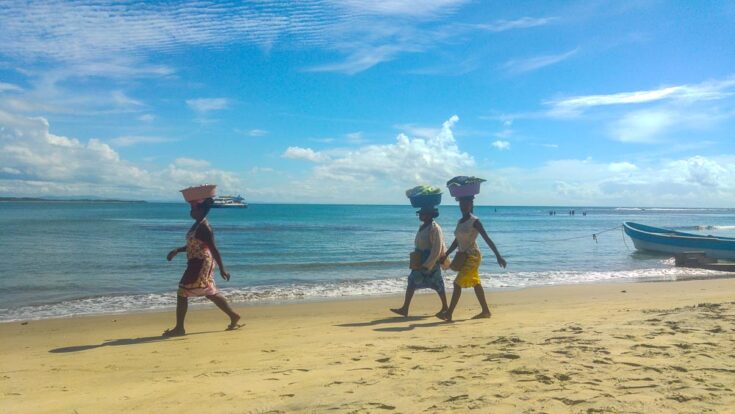
You will see a lot of older white men with young local girlfriends in Madagascar, similar to what you see in Thailand or the Philippines.
On the other hand, solo western women shouldn’t face too much unwanted attention, but you shouldn’t walk around on your own after dark at all.
Language in Madagascar
The main language in Madagascar is Malagasy. It’s spoken by everyone. French is the second official language, but every French tourist I met was surprised how FEW locals actually spoke French outside the big cities.
VERY few people speak English in Madagascar

I don’t speak either Malagasy or French, but I still found traveling around Madagascar easy.
The locals were always accommodating and eager to help you out even when we couldn’t speak the same language.
Sunset over the famous Sunset over the Baobabs in western Madagascar.
Guidebook to Travel Madagascar
The newest edition of Lonely Planet Madagascar is pretty accurate and helpful when it comes to transport. But it seemed like EVERY hotel and restaurant (as always) had increased their price since the book came out.
For example, La Banane hostel on I’ll Sainte Marie is priced in the book at 5000 Ariary for a dormitory but the price in April 2017 is 18 000.
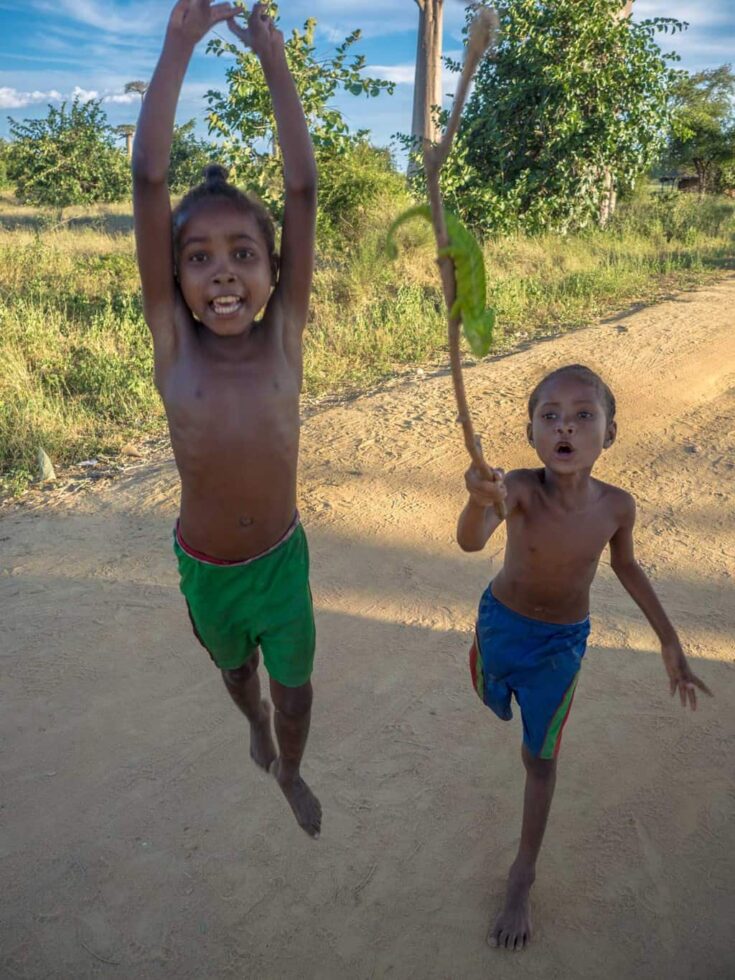
Hotel Eden in Tamatave is 16 000 in the book, but the price now is 28 000. All the restaurants in the book seem to have increased the price by about 5000 for each meal.
A few of the hotels in the book have been shut down for years like Hotel Frederic in Tamatave, which is just a pile of ruins.
The boat service Melissa Express recommended in the book to get to Isle Sainte Marie from Tamatave doesn’t run anymore either. It was very evident that Madagascar tourism really changed the place.
Food in Madagascar
Malagasy cuisine is heavily meat-based, and every meal seems to come with rice.
The most popular dish in Madagascar is zebu meat (the local breed of cattle). Almost every restaurant, even small local ones, served zebu steak or a zebu stew. Chicken, duck, and seafood are also always available.
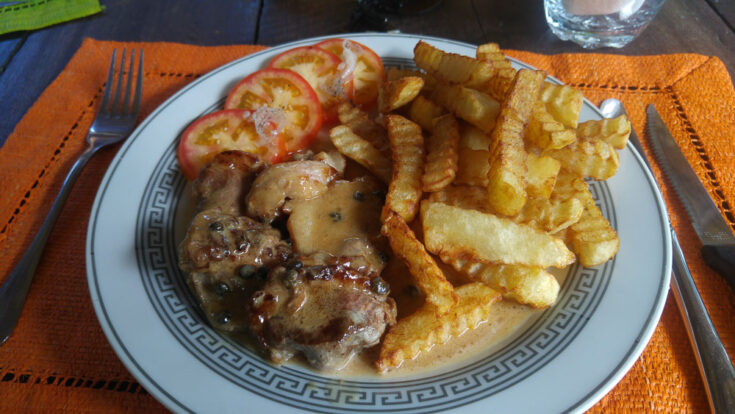
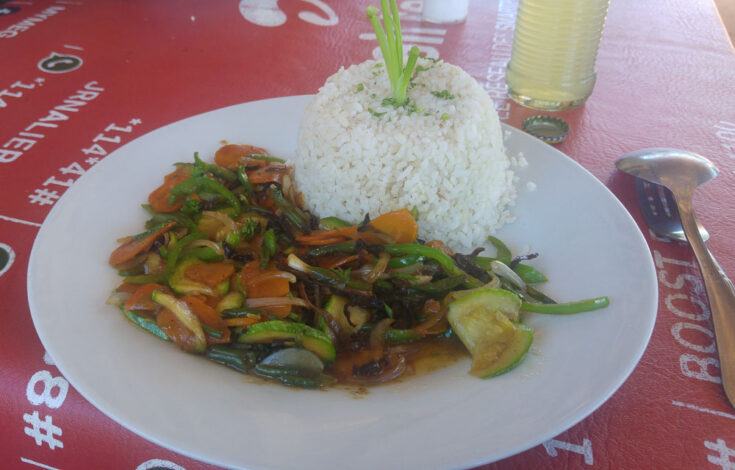
For vegetarians, fried rice with vegetables or noodles with vegetables are the most common dishes.
But there is always a vegetable-based accompaniment to go with some rice and lots of eggs available, so being a vegetarian (or even vegan) in Madagascar isn’t a problem.
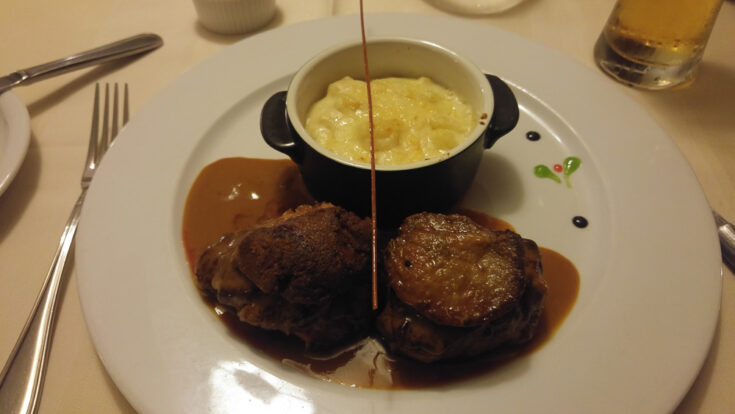
What a 35 000 Ariary Zebu Steak will look like in one of the restaurants in the country.
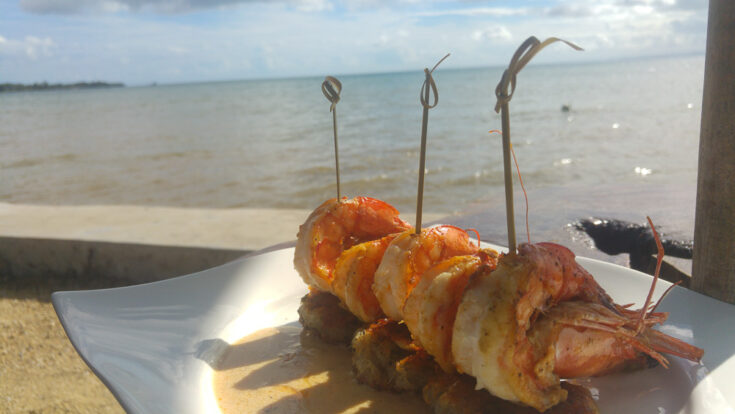
Beer And Alcohol in Madagascar
Only drink bottled water. Bottled drinking water is available everywhere together with coca-cola, Fanta ananas (it’s excellent), and alcohol too – especially the local flavored rum (Rhum arrange) or the local beer brands like Three Horses Beer (THB), Castel, Queens, and Skol.
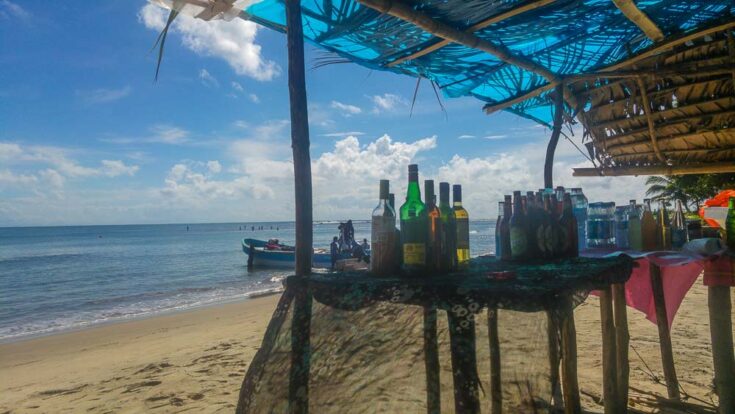
While the locals often drink rum because it is much cheaper than beer, the quality of beer in Madagascar is one of the best in Africa.
At a restaurant, a big bottle of beer is often the same price or even cheaper than a bottle of water.
Budget for a Trip to Madagascar
Madagascar can be done pretty cheaply if traveling on a budget, but you will have to be traveling very rough and taking local transport.
Hostels with dormitories are only really in the capital and very few other destinations.
So traveling with a friend will bring the cost down A LOT.
For EVERY national park, you are required to pay a daily entrance permit and to have a guide.
National park tickets are between 55 000 (17 USD) – 65 000 (20 USD) a DAY. Guides are normally around 15 000 (5 USD) a day.
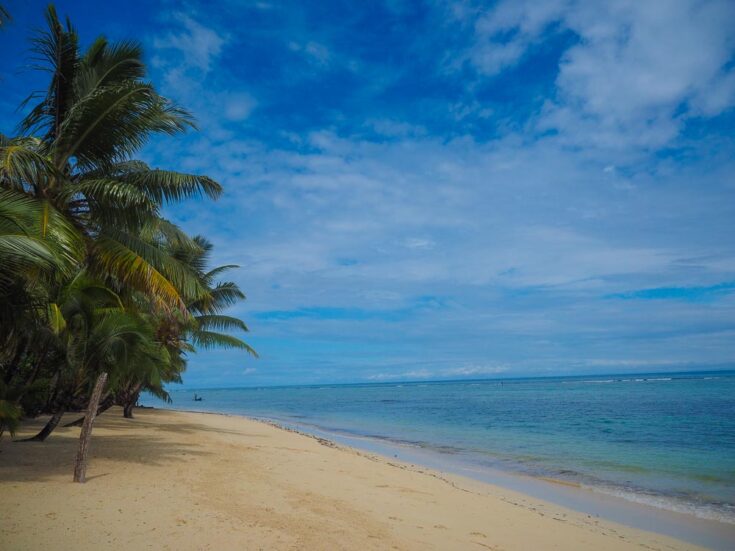
If you want to go to remote places and some national parks, hiring a 4WD car with a driver is often (always) the only option.
Check out the most popular hotels for people who want to share:
The standard price is 65 USD +fuel a day.
Cheap: Around 20 USD a day.
Transport: Local taxi-brousse – 15 000 (5 USD) between big cities.
Accommodation: back hotels with own bathroom, normally with fan: 25 000 (8USD) / 30 000 (10usd)
Food: Local street food and local restaurants. 2000 (0.6 USD) for eggs and toast with coffee for breakfast. Dinner at a local restaurant, 7000 (2 USD) for rice with zebu steak.
Midrange: 45 USD a day.
Transport: Cotisse Transport – 20 000 (6 USD) to 30 000 (10 USD)for Premium.
Accommodation: 90 000+ (30 USD) room with aircon, usually an excellent standard.
Food: 15 000 (5 USD) a meal, a great meal in a typical restaurant.
Flashpacker: 150 USD+ a day.
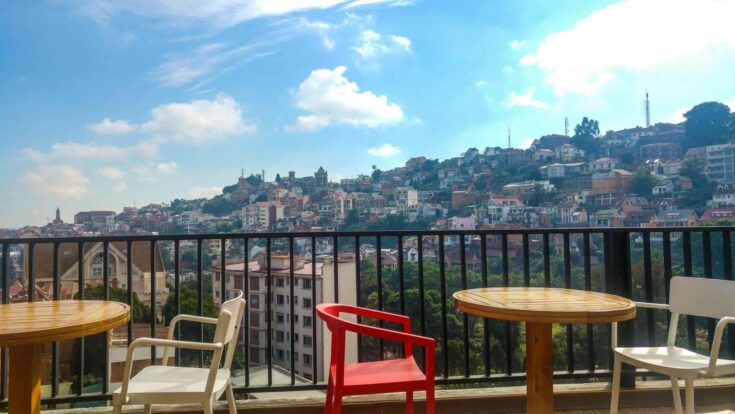
Transportation: Private 4WD with a driver, 65USD + fuel.
Accommodation: 70 USD a day. Great hotels to a high western standard often with breakfast buffets.
My recommendation for a paradisiacal beach resort in Madagascar would be Ile aux Nattes.
Food: 35 000 (11 USD) A great meal in some of the best restaurants in the country.
What to Pack for Your Madagascar Visit
Except for the typical gear you would usually pack, you should also definitely pack:
Flashlight: There is almost no street light in Madagascar – even the big cities have no light after dark. Power blackouts are widespread outside the main cities.
Powerbank: It is common to only have electricity for a few hours a day in remote places in the country. Some days there is no electricity at all.
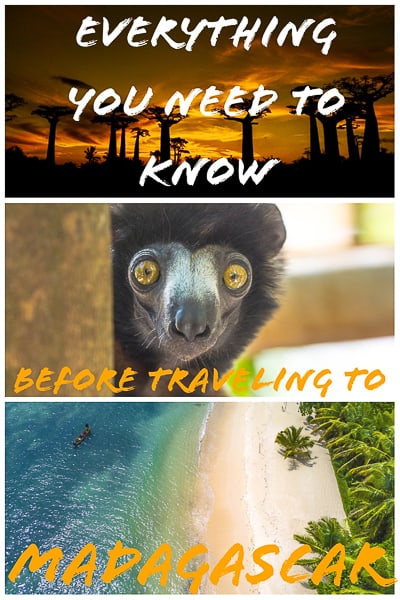
Bug spray: There are tons of mosquitos and other annoying biting bugs in Madagascar.
Waterproof: Something waterproof for your bag.
Your backpack or suitcase will be put on the roof while taking local transport and it rains a lot in Madagascar.
High-factor sunscreen: Difficult to find and expensive to buy when you do, so bring plenty if you burn easily.
If you plan on backpacking for an extended period of time, check out my backpacker’s packing list.
Electricity In Madagascar
The power plugs in Madagascar are the standard European standard 220V dual-pin power plugs. Everyone except mainland Europeans will have to bring a power adapter for your trip here.
Overall Experience Of Traveling to Madagascar
Overall Madagascar is a great country to travel around. But you will need more time to explore Madagascar than you would typically need for other countries.
I was able to see A LOT less in my 16 days on the island than I would be able to do in most other countries in the world at the same time.
You will also have to spend more money on Madagascar for a comfortable trip than you would have to do in other countries.
But if you have the time and are up for an adventure, Madagascar is a fantastic destination. I’d definitely like to come back in the future, but I will be sure to have more time next time.
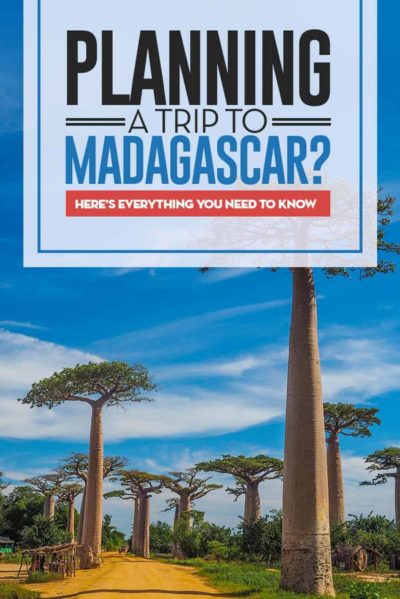

Veronika
Tuesday 4th of October 2022
What a great article! We're currently dreaming of going to Madagascar again - we've been there before and we love, love love it! Here's to a year with loads of travel plans and new experiences!
Ana M Pico
Monday 22nd of June 2020
I decided to go to Madagascar next year. Looking for information I got your very informative page. Thanks so much. Do you know of any place I can get info about traveling there after Covid19?
Doreen
Friday 29th of May 2020
Dear Christian, Thank you for this informative Post. I am a late 20s Youth with Madagascar on my Travel Bucket when the Pandemic finally gives us chance to live again.
In my plan I will be with my Sisters 17 and 22 and my 52 Year Old Mother. We intend to Visit for 16 Days. I intend to have a very good family time with them and also enjoy a little of the Night Life in Madagascar for a fun filled trip. I need your advice, 1. Which part is best ideal for Good fun. We are coming from Uganda.Should we go North? South? East or West? Is it possible to tour a few meaningful places in all Coasts? 2.Do you recommend an Air B and B or can we rent an Apartment? Are these options safe, can we party and make a little merry at night as a family or? Advise us on what is most Ideal.Or should we go to a Hotel instead? Can you recommend? 3.Do you have any Contact person that could be of help to me as I plan my travel? 4. In case one of us gets sick can UAP insurance work for us? 5. Would you recommend good places to visit that will help us make memories as a family? I am grateful, Doreen,Ug
Emmanuel
Saturday 16th of May 2020
Thank you so much for the fital information on how to take a trip to madacaascar .
Manjunath K P
Wednesday 12th of February 2020
Hi Christian Your article was very informative. I am shortly travelling on an invite from the tourism department as I am a travel agent based in Bangalore, India
Will look forward to read more of your travel blogs. Thanks & regards